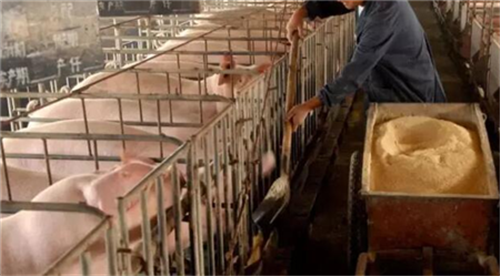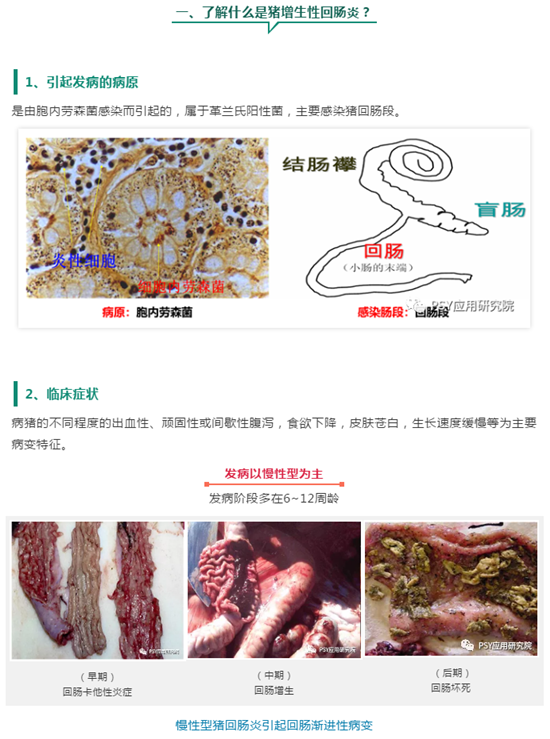What are the symptoms of pig poisoning? How to treat it?
Summary: pig poisoning rarely occurs in captive pigs, mostly in bulk pigs, or poorly managed small and medium-sized pig farms. Once there is pig poisoning, it should be treated in time. There are many reasons for pig poisoning, such as feed mildew, lees poisoning and so on, and the symptoms of pigs with different causes are also different, so rescuing poisoned pigs should find the cause for symptomatic treatment.
What are the symptoms of pig poisoning?
1. Symptoms of moldy feed poisoning: the symptoms of pig feed poisoning include pale skin at the initial stage, blue-purple in the later stage, unstable walking, foaming at the mouth and shivering all over the body. In severe cases, pigs have purplish red ears, lips, four hooves and tail, shortness of breath, loss of appetite, diarrhea, pupil dilation, convulsions and death. Before the onset of the disease, the feeding, drinking and mental activity of the pigs were normal, and the disease occurred suddenly after feeding. Different kinds of feed poisoning had characteristic pathological changes and clinical symptoms.
2. Symptoms of lees poisoning: during acute poisoning, the initial body temperature rises, conjunctival flushing, mania, shortness of breath. Gastroenteritis symptoms such as abdominal pain and diarrhea appear; sick pigs are paralyzed and cannot afford to lie on the ground. Chronic poisoning is characterized by digestive disorders, constipation or diarrhea, hematuria, inflammation of the conjunctiva, vision loss or even blindness, rashes and dermatitis. Acids cause disturbance of calcium and phosphorus metabolism and osteomalacia. Decreased body temperature, can be due to respiratory center paralysis and death; the course of the disease can be seen jaundice, hematuria, pregnant sows miscarriage. Most of them died of respiratory paralysis.
3. Symptoms of salt poisoning in pigs: salt poisoning in pigs is mostly a mass phenomenon, and the symptoms of pigs are like drinking water, vomiting and diarrhea. it is accompanied by mental symptoms such as dullness, deafness, dilatation of horn bow, walking, turning, convulsions, molars, salivation, muscle tremor, limb paralysis, coma and so on. Pig mental symptoms can occur many times a day, ranging from 2 to 3 minutes at a time. In the later stage of salt poisoning, pigs have dyspnea, paralysis, lying on the ground, and often die in a coma. In the autopsy of dead pigs, congestion and edema of gastrointestinal mucosa were found, showing other inflammation, pericardial effusion, brain edema, and systemic tissue and organ edema.
4. Symptoms of nitrite poisoning: acute poisoning pigs often develop 10~15min after feeding, and chronic poisoning can occur within a few hours. In general, pigs with strong physique and exuberant appetite suffer from serious disease because of their large food intake. Diseased pigs have severe dyspnea, polyuria, visible mucosal cyanosis, piercing the tip of the ear and tail, etc., with a small amount of soy sauce-colored blood, normal or low body temperature, and cold at the end of the body. Gastroenteritis symptoms such as salivation, vomiting and diarrhea occur due to stimulation of the gastrointestinal tract. Ataxia, spasms, struggle and whining, or blind movement with a weak heartbeat. Before he died, he opened his bow, twitched, and fell to the ground.

5. Symptoms of copper poisoning: the onset time is fast, and in most cases, pigs will appear related symptoms after eating copper forage for 1 hour, that is, loss of appetite, anorexia, drooling, abdominal pain, limb weakness, vomiting, diarrhea (fecal matter with stench, blue and cyan color, with mucus), unstable walking, rapid heart rate, general spasm and shock. The disease control results of these pigs are poor, and they will basically die within 1-2 days of copper poisoning. Chronic type-the disease course of pigs suffering from this type of copper poisoning is long, mostly in more than a week or less than a few months. there are mainly symptoms such as small appetite, poor appetite, poor mental state, weight loss, dyspnea, diarrhea, eye swelling, difficulty in eye opening, muscle trembling, jaundice and so on. The laboratory autopsy of dead pigs showed that the pathological features were as follows: acute type-severe ulceration of pig gastric mucosa, more bleeding, multiple necrosis of intestinal conjunctiva, honeycomb-like ulcers in cecum and ileum, and membrane attachment in duodenum. The color is dark green, and the attachment position is at the anterior end of the intestine. Chronic type-after dissection of dead pigs with copper poisoning, it can be seen that the body has severe jaundice, obvious congestion and swelling in the kidney, hepatic steatosis, hepatic hemorrhage and swelling in the liver, and serious pathological changes in the myocardium. there was edema in the lungs, and the blood state was thin.
6. Pesticide poisoning: pesticides that may cause pig poisoning include organophosphorus, carbamate and chlorinated hydrocarbon insecticides. The main reasons are that pesticides are accidentally mixed into feed, scattered in pig pens, and overdosed or licked when spraying or spraying pesticides.
Symptoms:
① organophosphorus and carbamate poisoning. Poisoning symptoms: salivation, defecation, vomiting, unstable gait, dyspnea, muscle tremor; lesions: no characteristic lesions, usually large amounts of fluid in the respiratory tract and pulmonary edema
Poisoning of ② chlorinated hydrocarbon insecticides. Clinical symptoms: hyperexcitement and tonic clonic convulsion; lesion: only mechanical injury
Pig poisoning
How to treat if pig is poisoned?
1, mildew feed poisoning treatment method: first stop feeding suspicious feed, with sodium sulfate or magnesium sulfate 20 grams 150 grams of internal administration, so that the gastrointestinal toxicants out of the body, can also take medical charcoal 2 grams 50 grams, and then take salt laxatives. If nitrous acid poisoning, 1% methylene blue 1 ml / kg intravenous injection, or 5% toluidine blue 5 ml / kg intravenous, intraperitoneal or intramuscular injection. Alkaloid poisoning can be diluted with 8-10 drops of iodine tincture and water. Cyanide poisoning can be detoxified with methylene blue and sodium thiosulfate. Salt poisoning can be caused by intravenous injection of calcium bromide. Such as convulsions, convulsions, injection of chlorpromazine 30 mg 50 mg or Lumina and other sedative and spasmodic, heart failure injection of Anna plus 20-25 ml or nicotinamide, etc., improve the coronary circulation and excite the central nervous system. At the same time, in order to speed up the excretion of absorbed toxins and regulate the physiological detoxification function, large doses of 5% to 10% glucose, normal saline and compound physiological saline are often injected intravenously or intraperitoneally.
2. The treatment of lees poisoning: if the proportion of pig feed distiller's grains is too high, it is very easy to have distiller's grains poisoning. The symptoms of poisoning are: restlessness, exuberant screaming, flushing mucosa, staggering walking, abdominal pain and dysentery; chronic poisoning is accompanied by indigestion, jaundice, dermatitis, hematuria and other symptoms. First aid can immediately inject 10% 20% sodium plus 5 ml ~ 10 ml, intravenous injection of glucose saline 500ml, and oral administration of 5% sodium bicarbonate solution 1000 ml ~ 2000 ml.
3, salt poisoning treatment methods: generally early suffering from pigs with normal body temperature, only show low spirits, do not want to eat, extremely thirsty, accompanied by foaming at the mouth, abdominal pain, constipation or dysentery and other symptoms, sometimes with blood in the feces. If salt poisoning occurs in pigs, the feed with high salt content should be stopped immediately, the ear tip and tail tip of the affected pigs should be bled, and the affected pigs should be injected intravenously with magnesium sulfate (0.1 g / kg body weight) and 10% glucose injection 250ml ~ 500ml, once at intervals of 6 hours, and can be cured by continuous injection for 2 ~ 3 times.
4. Treatment of nitrite poisoning: pigs will show mania, rapid heartbeat, dyspnea, vomiting and drooling, cold limbs and ears, whole body tremors and convulsions, hypothermia, severe spasm and foaming at the mouth.
Soon fainted and suffocated to death. First aid should be performed as soon as possible to the affected pigs ear tip and tail tip bloodletting, and immediately intravenous or intramuscular injection of 1% methylene blue solution (pigs per kilogram body weight injection 1 ml), or intravenous injection of toluidine blue solution (pigs per kilogram body weight injection 5 ml), combined with oral or intravenous injection of large doses of vitamin C, as well as intravenous glucose injection; for heart failure pigs can be combined with camphor caffeine injection. In order to prevent nitrite poisoning in pigs, fresh green feed should be encouraged to feed pigs as much as possible.
5. treatment of copper poisoning: first, all the feed for pigs will be replaced, and the vitamin powder (vitamin B, E, K), sugar solution (0.1% vitamin C), iron and other substances prepared in advance will be added to the feed and drinking water without any additives for pigs, so as to improve the uncomfortable symptoms of pigs as soon as possible. Secondly, calcium sodium ethanate and penicillamine can be used to treat pig diseases. the former is treated by intravenous drip of 2g drug + 200ml normal saline twice a day, and the latter is added to the feed for pigs to take. The curative effect is good when given three times a day, and the dosage of penicillamine for a single pig is 0.3 grams. If the pig is seriously ill after copper poisoning, it should be treated with potassium ferricyanide solution (0.2%), magnesium oxide, egg white, etc., and the treatment time should be controlled for 3 days. If pigs have severe symptoms of gastric ulcer after copper poisoning, it is recommended that pigs take ranitidine for a week for improvement, and soda powder (0.1%) can be added to feed for pigs to eat, which also has a better effect on improving gastric ulcer in diseased pigs.
6. Treatment of pesticide poisoning:
① organophosphorus and carbamate poisoning treatment: 0.5mg / kg body weight dose of atropine sulfate intravenous injection, severe can be combined with oral activated carbon.
Treatment of ② chlorinated hydrocarbon insecticides poisoning: there is no specific drug, but long-acting barbiturates can be used to sedate pigs. (auxiliary measures: if you rinse with warm soapy water through skin contact, if ingested by mouth, you can use the suspension of activated carbon and water, avoid using oil laxatives, and in serious cases, infuse glucose and infusion.)
- Prev

Sharing of a case of control of viral diarrhea in piglets in delivery room
Sharing of a case of control of viral diarrhea in piglets in delivery room
- Next

Why is diarrhea increasing in growing and finishing pigs at present? It's getting more and more popular!
Why is diarrhea increasing in growing and finishing pigs at present? It's getting more and more popular!
Related
- On the eggshell is a badge full of pride. British Poultry Egg Market and Consumer observation
- British study: 72% of Britons are willing to buy native eggs raised by insects
- Guidelines for friendly egg production revised the increase of space in chicken sheds can not be forced to change feathers and lay eggs.
- Risk of delay in customs clearance Australia suspends lobster exports to China
- Pig semen-the Vector of virus Transmission (4)
- Pig semen-the Vector of virus Transmission (3)
- Five common causes of difficult control of classical swine fever in clinic and their countermeasures
- Foot-and-mouth disease is the most effective way to prevent it!
- PED is the number one killer of piglets and has to be guarded against in autumn and winter.
- What is "yellow fat pig"? Have you ever heard the pig collector talk about "yellow fat pig"?

